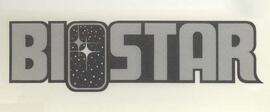University of Saskatchewan - Institute for Northern Studies (INS)
- SCN00226
- Entidade coletiva
- 1960-1984
With John Diefenbaker’s “Northern Vision Speech” in February 1958, Canadians turned their collective eyes north. It was now a Federal funding and policy priority. There was, however, a wide knowledge gap when compared to the Scandinavian countries and Russia. To fill this gap, the University of Saskatchewan established The Institute for Northern Studies in January 1960. Building on the decades of northern research, the U of S created a muli-disciplinary unit dedicated to research on the Subarctic and Arctic regions of Canada. A special emphasis was placed on northern Saskatchewan. The Institute was to act as a focal point for northern research at the University, to encourage northern research by obtaining scholarship funds and grants, and to coordinate interdisciplinary research. In addition the Institute provided a lecture series which promoted understanding of the Canadian north; training programs which taught northern peoples new skills; cross-cultural courses for people working in the north; and a northern information service. A sample of the studies supported by the INS include political and social history of the Northwest Territories; biological investigations on forest vegetation, fungi, mammals, biting insects, birds; economic surveys of water transportation, mining, fishing, timber, furs; the geology of some mining camps, the geophysics of the earth's crust; engineering design of radio communication for remote areas. In 1981 it was announced that the Institute would be phased out over three years. The records of the INS can be found at the University of Saskatchewan Archives.

